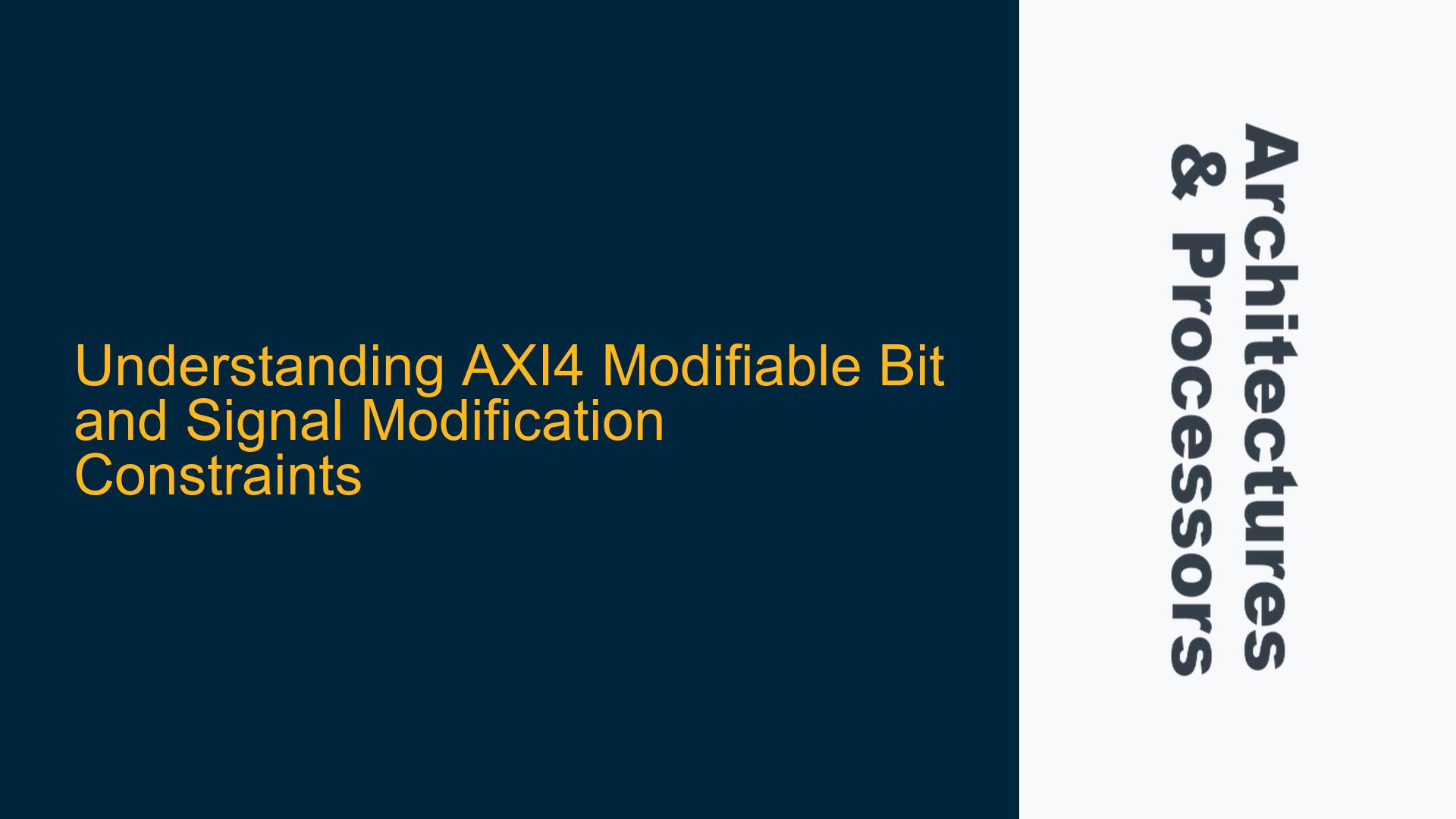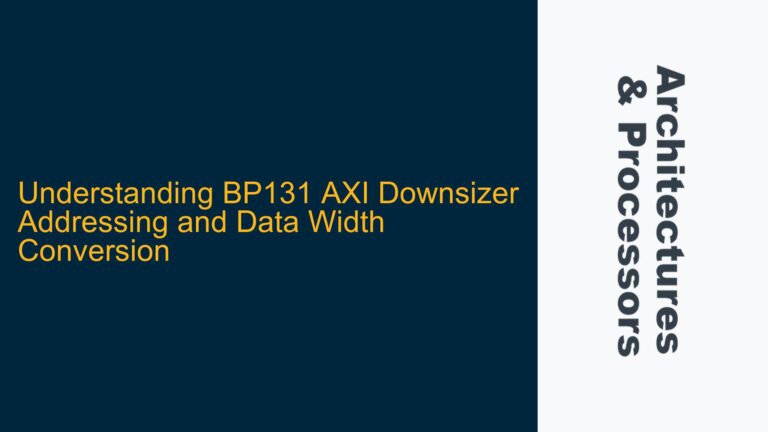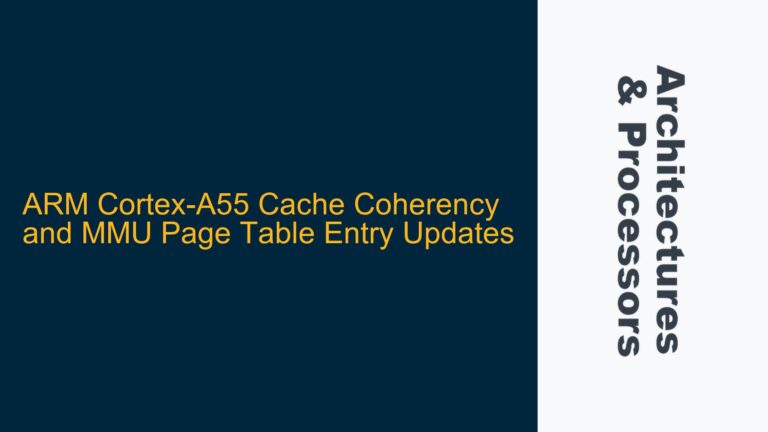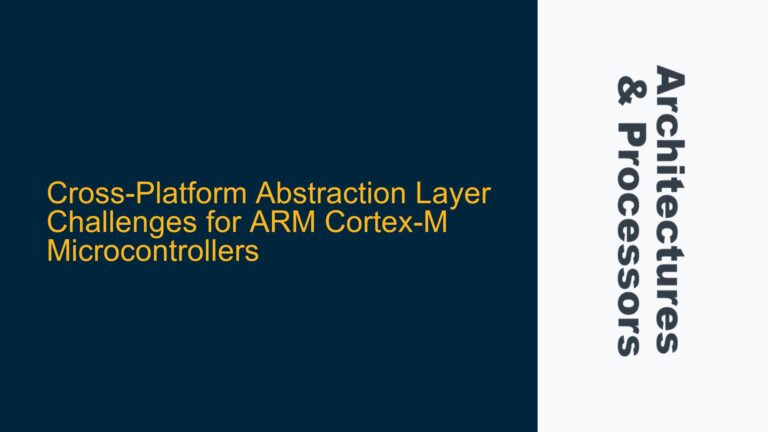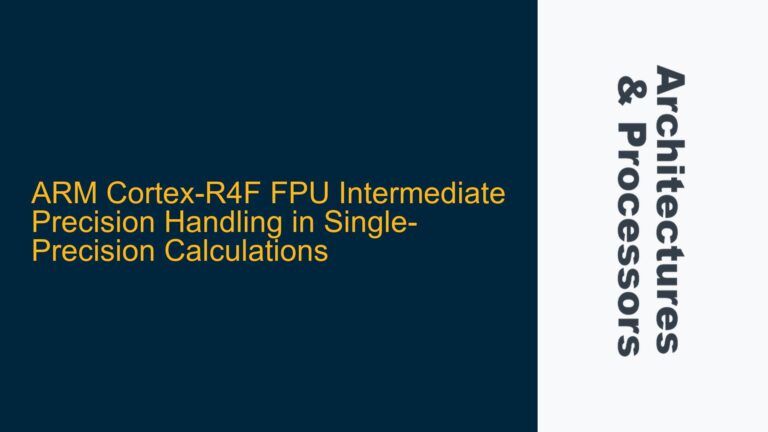AxCACHE[1] Modifiable Bit and Non-Modifiable Transaction Rules
The AxCACHE[1] signal in the AXI4 protocol, often referred to as the "Modifiable" bit, plays a critical role in determining whether certain attributes of a transaction can be altered by the interconnect or other components in the system. When AxCACHE[1] is set to 0, the transaction is marked as non-modifiable, meaning that the transaction attributes must remain fixed as per the original request. The AXI4 specification explicitly outlines which signals must remain unchanged in non-modifiable transactions, including AxADDR, AxREGION, AxSIZE, AxLEN, AxBURST, AxLOCK, and AxPROT. These signals are critical for ensuring that the transaction adheres to the intended memory access pattern, security requirements, and atomicity guarantees.
However, the AXI4 specification also provides exceptions to these rules, particularly in scenarios where hardware limitations or performance optimizations necessitate modifications to certain signals. For instance, if the bus width is narrower than the transfer size, the AxSIZE signal may need to be adjusted to accommodate the narrower bus. Similarly, in AXI4, an INCR burst with more than 16 beats can be split into multiple smaller bursts, even if the transaction is marked as non-modifiable. This exception allows for modifications to AxADDR and AxLEN to facilitate the splitting of the burst.
The core question revolves around whether other signals, such as AxREGION, AxBURST, AxLOCK, and AxPROT, can also be modified under specific circumstances, despite the transaction being marked as non-modifiable. Understanding these exceptions and their implications is crucial for designing compliant and efficient AXI4-based systems.
Exceptions to Non-Modifiable Rules: AxREGION and AxBURST Considerations
While the AXI4 specification is clear about the general rules for non-modifiable transactions, it also acknowledges that certain signals may need to be modified in specific scenarios. For AxREGION and AxBURST, the potential for modification depends on the system architecture and the intended behavior of the interconnect.
AxREGION is used in systems that implement the AXI4 Region feature, which allows for the partitioning of the address space into multiple regions, each with its own set of attributes. In most cases, AxREGION should remain fixed for non-modifiable transactions to ensure that the transaction accesses the correct memory region with the appropriate attributes. However, there may be scenarios where the interconnect needs to remap the transaction to a different region due to address translation or system-level optimizations. In such cases, AxREGION may be modified, but this must be done in a way that preserves the integrity and security of the transaction.
AxBURST, which defines the burst type (e.g., FIXED, INCR, WRAP), is another signal that is generally expected to remain fixed for non-modifiable transactions. However, there are exceptions where AxBURST may need to be modified. For example, if the interconnect encounters a hardware limitation that prevents it from supporting a specific burst type, it may convert the burst to a supported type. This conversion must be done carefully to ensure that the transaction’s semantics are preserved. For instance, converting a WRAP burst to an INCR burst may alter the access pattern, potentially leading to incorrect behavior if the transaction relies on the wrapping behavior.
AxLOCK and AxPROT, on the other hand, are more strictly controlled. AxLOCK is used to indicate atomic transactions, and modifying it could compromise the atomicity guarantees. Similarly, AxPROT defines the protection attributes of the transaction, including security and access permissions. Modifying AxPROT could lead to security vulnerabilities or access violations. Therefore, AxLOCK and AxPROT should never be modified for non-modifiable transactions.
Implementing Compliant Signal Modifications in AXI4 Systems
To ensure compliance with the AXI4 specification while accommodating necessary signal modifications, designers must carefully analyze the system requirements and implement appropriate mechanisms for handling exceptions. The following steps outline a systematic approach to addressing these challenges:
First, designers should thoroughly review the system architecture and identify any scenarios where signal modifications may be required. This includes evaluating the bus width, burst length, and address space partitioning to determine whether exceptions to the non-modifiable rules are necessary. For example, if the system uses a narrow bus, the AxSIZE signal may need to be adjusted to match the bus width. Similarly, if the system supports address translation or region remapping, AxREGION may need to be modified.
Second, designers should implement logic within the interconnect to handle these exceptions in a compliant manner. This logic should be designed to preserve the integrity of the transaction while accommodating the necessary modifications. For instance, if an INCR burst with more than 16 beats needs to be split into smaller bursts, the interconnect should update AxADDR and AxLEN accordingly while ensuring that the overall transaction semantics are maintained. Similarly, if AxBURST needs to be modified due to hardware limitations, the interconnect should ensure that the modified burst type is functionally equivalent to the original burst type.
Third, designers should rigorously verify the implementation to ensure that it complies with the AXI4 specification and does not introduce any unintended side effects. This verification should include both functional and performance testing to validate that the signal modifications do not compromise the correctness or efficiency of the system. For example, designers should verify that modified AxSIZE values correctly align with the bus width and that modified AxREGION values correctly map to the intended memory regions. Additionally, designers should verify that modified AxBURST values do not alter the access pattern in a way that could lead to incorrect behavior.
Finally, designers should document the implementation and verification process to provide a clear reference for future development and debugging. This documentation should include detailed descriptions of the signal modification logic, the scenarios in which modifications are allowed, and the verification results. By following these steps, designers can ensure that their AXI4-based systems are both compliant with the specification and optimized for performance and functionality.
In conclusion, while the AXI4 specification provides clear rules for non-modifiable transactions, it also allows for exceptions in specific scenarios. Designers must carefully analyze their system requirements and implement compliant mechanisms for handling these exceptions. By doing so, they can ensure that their AXI4-based systems are both efficient and reliable, while adhering to the standards set forth by the specification.
